Category: economics
10/16/05 02:57 - ID#28202
Sabres economic inpact article
Return of Sabres puts money into many local pockets
Concessions workers, downtown restaurants, governments all benefit
By DAVID ROBINSON
News Business Reporter
10/16/2005
Click to view larger picture
Mark Mullville/Buffalo News
It's not just fans of the Buffalo Sabres who are happy to see the National Hockey League team playing again.
Click to view larger picture
Ronald J. Colleran/Buffalo News
Mary Beth Billittier of Chef's Restaurant says her business can get a 20 percent boost on nights the Sabres play. Here she greets customers Ronald P. Keellner, left, and Lawrence J. Speiser.
Mary Beth Billittier is thrilled to see the Buffalo Sabres playing again - and not just because she's a hockey fan.
Billittier also is happy because the return of the National Hockey League is bringing back the swarm of fans who eat at Chef's restaurant before games, which can bump up her business by as much as 20 percent.
"It's definitely increased our business on those days. We do get that hockey rush," she said. "Plus, the Sabres come in for lunch before every home game and people come in to see them. We get a double hit from them."
Billittier's not alone. While the return of the Sabres after missing the 2004-05 season due to a lockout isn't causing an economic boom felt throughout the region, it is having a noticeable impact on the area around HSBC Arena.
"We'll see a spike in certain types of business," said Richard Geiger, the president of the Buffalo Niagara Convention and Visitors Bureau.
For starters, the return of hockey is putting about $2 million in extra income into the pockets of the 700 to 900 concessions workers, ushers and other game-night employees, said Sabres spokesman Michael Gilbert.
Those earnings, which average about $50 per game, often are used as a secondary source of income to pay for everything from private school tuition to family vacations. But for workers whose primary job pays in the $20,000 range, that extra $2,000 in earnings during the season can be an important part of their overall income.
The return of the Sabres also means extra business for the downtown restaurants and bars that cater to the fans heading to the arena. Cobblestone, a restaurant located in the shadow of the HSBC Arena at South Park Avenue and Mississippi Street, opens only on nights when there is an event at the arena or for Thursday in the Square concerts.
Cobblestone was open for only about 40 dates last season, but with the return of the Sabres and more than 40 home games, Cobblestone now expects to be serving customers twice as often this season.
"There are 40 more nights of something going on at the arena," Gilbert said.
The return of the Sabres also means extra demand for hotel rooms for the visiting teams, as well as fans from out-of-town attending a game. "We'll see it in hotel occupancy," Geiger said. "When the visiting teams come in, they'll take 20 to 25 rooms. And the even bigger impact will be on the restaurants."
Even the Sabres staff, which had been cut by more than a third during the lockout, has returned to its old level of about 125 people, Gilbert said.
The return of the NHL also is a boon for state and local governments, which will reap significantly larger tax payments from the extra income generated by the salaries earned by the Sabres players and arena workers, along with sales taxes on parking and items associated with the team.
In all, local governments will pick up an extra $1 million in sales taxes, while the state government will see more than $3 million in sales and income taxes that disappeared because of the lockout, according to Sabres figures.
"It's a positive," said George Palumbo, a Canisius College economics professor who closely follows the Buffalo Niagara economy.
The impact of the Sabres also depends on where its fans come from. Fans from outside the region pack the biggest economic punch because they bring new money to the area that flows to hotels, restaurants, the team and whatever other attractions they take in while they're here, he said.
But because local residents tend to have a limited amount of money for recreational activities, from concerts and movies to Buffalo Bills and Sabres games, a spike in interest at one type of event often takes money away from others.
"Unless you're bringing people into the region or getting people to spend money they otherwise wouldn't have spent, it's just taking the money from one set of recreational activity and moving it into another," Palumbo said.
With the Sabres idle, Shea's Performing Arts Center had a strong season last year, with shows like the Rockettes and the Lion King, boosting attendance to around 450,000. Crowds at the University at Buffalo men's basketball team's games last season were 38 percent bigger as the Bulls made a run at an NCAA tournament bid.
"You have a certain amount of discretionary dollars in the marketplace," Geiger said. "Hopefully, we'll see more people coming in from Rochester and on a regional basis. And I think we'll see people continue to come from southern Ontario, mainly because they can't get tickets in Toronto."
The return of the professional hockey also was a welcome boost for Delaware North Cos. Sportservice, the Buffalo-based business that handles concessions for seven NHL arenas, including HSBC Arena and arenas in Boston, Nashville, Columbus, Tampa, Dallas and Edmonton.
e-mail: drobinson@buffnews.com
two pictures from the article one is of Chefs and the other is the HSBC arena
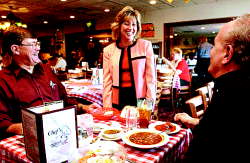
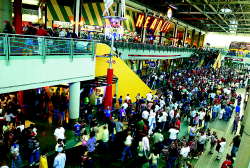
Permalink: Sabres_economic_inpact_article.html
Words: 1019
Location: Buffalo, NY
10/15/05 05:49 - ID#28201
China Continued
Artvoice in China
Bustling downtown Shanghai
(photo: Deborah Ellis)On the day we returned from China there was a front-page story in the New York Times that provided a remarkable finish to our 23,172-mile journey into Asia. The Times article was about Russia and the headline read “With Lenin’s Ideas Dead, Russia Weighs What to do With Body.” Lenin, the leader of the 1917 Bolshevik revolution and the founder of the Soviet Union, lies in a glass box in his Red Square mausoleum adjacent to the Kremlin. He’s been on public display there for the past eighty years, “occasionally sprouting fungi.” Under a lawn behind Lenin’s mausoleum lie the bodies of many other Communist Party luminaries, including Josef Stalin, Brezhnev, Chernenko and Feliks Dzerzhinsky, founder of the Soviet secret police.
“It’s time to get rid of this horrible mummy,” said Valeriya Novodvorskaya, head of the Democratic Union. “I would not care even if he were thrown on a garbage heap.”
The Times reported that an informal poll by a Russian radio station found 75 percent of people said that not just Lenin but all of the Soviet figures should be evicted from Red Square. According to the Times, young Russian adults barely recall the Communist times and show little interest in looking back.
“Lenin?” mused Natasha Zakharova, 23, as she walked off Red Square, admitting she was not sure whose body she had just seen. “Was he a Communist?”
Drummers at a dumpling banquet playing traditional music from the Tang Dynasty 600 A.D. This music is as Avante Garde as anything you'll hear today.
(Click for video)Our experience in China was not much different. We traveled thousands of miles through China and were passed off to at least six different guides, all between twenty-four to thirty-five years old. None of them, or anyone else we spoke to under the age of forty, had much to say about Communist China’s founding father, Chairman Mao Tse-Tung.
“I don’t really know anything about him,” said Lei Lei, 24, our guide in Shanghai. “He was dead before I was born.” She was, however, very knowledgeable about the more durable history of ancient China.
In Beijing, Dina (Yu Fen Mei) told us “Chairman Mao is from my mother’s generation. Very sad. Then everyone wished to get a bicycle and toilet. Today everyone wants a car, a cell phone and a laptop.”
“Nobody cares about Chairman Mao or any of those guys,” said Daniel, 27, our guide in Yichang. “In 1978 they stopped teaching Mao’s Red Book in schools and since 1982 hardly anyone reads it all. All we care about is whether there are any jobs. When I was seven years old I went to a school that was one large room that we had to share with water buffalo that the local farmers used. That was when we were still recovering from Chairman Mao. Today that school is a beautiful building with new classrooms, the latest computers on every desk and Internet access.”
In Xian, our guide Neil (Wang Zhe Jiang), a charming young man who spoke several foreign languages and two Chinese dialects, told us that few young people knew much about Mao and that many older people were now angry.
“My parents were both in the Red Guard youth movement during the Cultural Revolution [1966-1976]. They participated in attacking intellectuals, teachers, elders, and in tearing down our cultural institutions and destroying our history. Now my mother is very angry at herself and ashamed. She told me how she went into an ancient Toaist temple with her Red Guard friends and destroyed all the statues and figurines and painted Maoist slogans on the walls. I said to her ‘That’s a terrible story. I am a tourist guide. I would not even have a job if you succeeded in destroying all our history.’”
Pudong, Shanghai, in 1994
(photo: Xu Xuixian)
The same skyline in 2004
(photo: Xu Jianrong)And so the great Red Menace of the Cold War, world communism, seems to be evaporating. But in China there is something truly unusual going on, something that sets if far apart from India, Pakistan, Japan, South Korea, the European Union, or any of the other rising stars. One of the factors that initiated the Cultural Revolution was Chairman Mao’s paranoia that capitalism was beginning to permeate his communist dream. He was right, and although his final spasms of communist activism, the Cultural Revolution, damaged the country severely, China rolled inexorably towards an industrialized market economy. But what we have now is a country running full-tilt boogie on the capitalist highway driven by a morphing communist government with absolute authority; a country with trillions of dollars in capital, a workforce of over a billion people, no labor unions, and it owns all the property and dictates all the rules.
In cities all over China, entire neighborhoods are being razed to make way for massive new building projects and creating science-fiction-like skylines à la Blade Runner. If people need to be relocated they are simply ordered to move and given whatever compensation the Central Government feels is appropriate. This is the most populous, fastest growing economy in world history. People here in the United States who are focused on Wal-Mart are studying a tree and missing the forest.
In Shanghai there was a construction project right outside our hotel window. I kept waking up in the middle of night to look out at the hundreds of workers crawling over the steel girders and watch the spark of welding torches in the dark night air. Forty percent of all the building cranes on the entire planet are working in Shanghai alone, and there is massive building going on in Beijing, Chongquing, Xian and every other city in China. You can almost stand there and watch a building go up in a matter of hours; and these are all breathtakingly designed, not just buildings that look like window-box air conditioners tipped on their sides.
The Shangri-La Hotel in Shanghai, for example, just added a second tower with 375 rooms, luxury suites, restaurants, bars, health club, swimming pool, spa, etc. Eighteen hundred laborers worked three shifts a day around the clock to get the building completed. In Beijing the pace is even more accelerated because they are preparing to host the 2008 Olympics there. In addition to building a new 80,000-seat Olympic Stadium with a retractable roof, soaring luxury hotels are going up as fast as China can get its hands on the steel and concrete (after the Olympics many of these hotels will be converted to apartments and condominiums). In fact, former Artvoice editor Geoff Kelly, who is now working in the Middle East as a senior media officer for the Qatar Foundation, said that construction projects in Qatar frequently come to a standstill because China will suddenly buy all the available cement on the market and Qatar is forced to wait until supplies are replenished. In Chongquing, (population 31.6 million), they’ve built 60 bridges in just the past few years. Many are sweeping cable stay bridges similar in design to the “signature bridge” model we’ve been haggling about in Buffalo since 1998.
The 2008 Olympic stadium being built in BeijingTourism is exploding in China and the government is doing everything it can to encourage it and profit from it. The Central Government owns almost all the tour companies coming to China and the deals that are out there are the best you’ll find anywhere. Tours usually include airfare to China, hotel, all food—which is excellent—all travel within the country, including any domestic air flights, and busses with tour guides everywhere you go. Packages to China beat trips to any other country in the world. What the Chinese seem to be doing is using the Las Vegas strategy, where they give you really cheap hotel rooms and count on you blowing a boatload of cash in the gambling casinos.
On the China tours you can get travel for pennies but all tours every day lead to you to things like the Jade Factory (government owned); the Silk Factory (government owned); the Pearl Factory (government owned); The Friendship Store (government owned); the Terra Cotta Warriors Factory (government owned), the Great Wall gift shops—you get the picture. So while your food, lodging and travel may not be money-makers for China, almost every other tourism dollar you spend goes right into the Central Government’s cash register. Tour busses clog the streets in every city, although you won’t find many Americans on them. The vast majority of tourists to China are from other Asian countries like South Korea and Japan, and Southeast Asia, the Philippines, Malaysia, or Australia, England and other European countries.
Tour guides receive no pay, only tips. But consider that the average tip to a tour guide is roughly $10 from each person for an entire day of dragging you around, feeding you three times and explaining China for twelve hours. However, some tours are as large as forty or fifty people (ours was only seven), so that means a possible $400-$500 dollars a day, and tour guides pay no taxes. Needless to say, being a tour guide is a very lucrative and competitive job and the training and testing for it is rigorous, requiring language skills and a thorough knowledge of ancient Chinese history.
This is not to say that everything in China is glitz, glamour and tourism. For the most part, we have to assume that since the government owns the tour companies––the same government that censors the Internet, represses Tibetans and members of the Falungong movement, foreign scholars, journalists, democrats, delinquents and the Muslim Uigur minority––tourists see what the Chinese government wants you to see. That’s fine. We were happy to stay in five-star hotels with all the amenities of the Plaza in New York and experience the Great Wall, Chinese Acrobats, kung-fu demonstrations, Buddhist temples, pagodas, gardens, parks, dumpling banquets, the Forbidden City, emperor’s palaces and summer palaces, dance and music performances and walking tours.
Chinese gather around to meet Sarah
(photo: Jamie Moses)But our experience had an unexpected element. Apparently, tourists rarely bring young children along on trips or tours, and the Chinese, who are only allowed to have one child, treasure children. So everywhere we went my little blue-eyed, three-year-old daughter, Sarah, drew throngs of Chinese who literally mobbed her, smiling, staring, snapping photos, asking to pose with her. I am not kidding. It was like trying to walk down 5th Avenue with Jennifer Aniston or window shop with Tiger Woods. At the zoo in Chongquing she was even taken inside the Great Panda bear exhibit to pet the Panda.
But we didn’t always stick to the tourist program. Some days we simply didn’t get on the little tour bus and went off on our own. One day I went for a walk through Shu Yuan Men (the Arts Street) in Xian. This is a dense, bustling neighborhood of narrow streets lined with hundreds of tiny independent shops selling paintings, antiques, jewelry, crafts, art supplies, historical relics and folk art. Price tags are meaningless and generally I got into the habit of offering a third of whatever the price tag said. Vendors always have a calculator handy. The routine is that you look at a price tag, shake your head and begin to walk away. They chase after you and stick a calculator in your face, inviting you to punch in a different number. We punch in numbers until we’re both satisfied–usually less than half the tagged price.
Vendors stalls at the Terra Cotta Warriors site outside of Xian. The man laughing at the end of the video is Neil, our tour guide in Xian.
(Click for video)The smells of food frying in woks in the Shu Yuan Men district beckon one down dark alleys twisting off into mysterious paths. I wandered down one of these in search of a bathroom, and a girl hawking stir-fried shrimp led me to one—a dark, damp dimly lit room. It offered two options: a hole in the ground surrounded by a porcelain squatting pad or a western-style toilet that had to be flushed by filling up a bucket from a faucet poking out of the ground. No sign of toilet paper.
Besides tour guides, farmers don’t pay taxes either. The government gives rural peasants land for free, and as long as they grow food they can keep whatever they make, which, however, is very little. On another off-the-program trip we visited a prison for opium addicts and a peasant rice farmer living several miles outside of Yichang, a town on the Yangtze River surrounded by rice paddies. His home had no electricity; no running water and many of the windows had no glass. The floors of some rooms were simply the dirt beneath the building. He burned coal for cooking and heating, which means in winter the kitchen is the only warm room in the house. As we walked in, three roosters who shared the house with him and his family ran squawking past us. We stayed about a half-hour and the women came home as we were leaving. They broke into big smiles as soon as they saw Sarah and we all talked more gibberish to each other, which no one understood; but the vigorous nodding and smiling said it all.
Handbuilt bamboo scaffolding on a construction project in Shanghai
(photo: Deborah Ellis)Across the road from the peasant farmer’s house was his rice paddy where his family worked, harvesting by hand with their pants rolled up to their knees. With such a large labor force a lot of the work in China is done by hand. We saw hundreds of buildings being demolished—not with bulldozers, but by work gangs wielding sledgehammers. And what was really remarkable was the scaffolding surrounding many of the building projects—bamboo poles and platforms are quickly hand-tied with complex knots by the workers—are added tier by tier as they move up the building.
Soon after leaving the farm we boarded a riverboat for a four-day trip up the Yangtze River and the spectacular cliffs of the Three Gorges. We stopped at numerous towns and sites along the river, took a sampan trip up a tributary and visited the Three Gorges Dam Project. This is a $75 billion project that will produce well over 18,000 megawatts of hydropower (almost eight times the size of the Niagara Power Project). It is China’s biggest engineering project since the construction of the Great Wall. When completed, at 607 ft. high and a mile and a quarter wide, this will be the largest dam in the world. To build the Three Gorges Dam the Central Government of China relocated 1.5 million people and they are going to flood hundreds of towns, villages, farms and small cities. Will there be an environmental impact? Yes. It will obviously affect the wildlife (we saw dozens of monkeys frolicking along the banks of Yangtze and even spotted a tiger). Fish like the Chinese sturgeon and the Yangtze River dolphin will be endangered and increased industrial activity will add further pollutants to the water. There will also be thousands of relics and ancient burial grounds submerged into the river. But from China’s point of view, the dam will control flooding, improve navigation, and create much needed electricity for a country starving for energy. But clearly, this is a building and engineering project that could not happen anywhere else in the world. Imagine telling 1.5 million Americans they were going to be relocated from their homes, farms and businesses so you could build a dam?
The captain of a small sampan sings to tourists while motoring up the Yangtze River.
(Click for video)But China is not America and in an admittedly superficial look at China, such as this article, it is impossible to go into great depth about the country. But let me at least offer some broad observations that should strike even casual sightseers:
In our travels we saw literally hundreds of thousands of people and not a single one was overweight. There’s no obesity problem here. They ride bikes, walk, practice tai-chi outdoors in the mornings and eat lots of fruits and vegetables. In fact, the population of China is 1.3 billion and the U.S. population is only 290 million, but if you put both populations on a scale, we’d probably weigh more.
After weeks of travel we saw only one black person and he at a Japanese restaurant eating sushi and chatting in French.
Every where you go there are flat-screen Samsung monitors. They are on the public busses, and subway cars, train and subway platforms have them every ten or twelve feet, outside of elevators, in hotel lobbies, downtown shopping plazas, street corners, just everywhere. And they program either a very modified type of MTV music or all education all the time. It’s either National Geographic or something similar. But even the MTV-like channels give English language lessons between songs.
The Chinese love slogans and the most frequent one is “A changing China is changing the world.”
Safety! Every traveler remarked on how safe they felt. China does not evoke the fear that travel to the Middle East, Africa, South America or many large American cities inspires.
Crime. There’s little evidence of it. Even after talking to the Chinese crime activity is mostly bicycle theft, pick-pockets, counterfeit products and some prostitution. On pick-pocketing, I have first-hand knowledge. My wallet was lifted, and by a real artist. While standing in a crowd I felt a slight tingle in a front pocket that was shut tight with Velcro and I slapped my hand down immediately and... no more wallet. The crazy thing is that about 10 minutes and a good distance later, I felt something hit my calf. I looked down and my wallet had been returned with all its contents, including credit cards. The cash was, of course, gone.
The idea the Chinese don’t want little girls is fading, and there is a good reason for that. Children are expected to take care of their parents in their old age. Only males used to get good jobs and only males could help on the farm. But China is now an equal opportunity employer, and more than half of our guides were high-wage-earning women with happy parents.
A horn player who sings in a bizarre voice at a dumpling festival. He is playing music from the Tang Dynasty 600 A.D. This music is as Avante Garde as anything you'll hear today.
(Click for video)They take education very seriously. Outside of Beijing we saw a huge, abandoned building project. It looked like a half-finished Disneyworld. It was. A Singapore businessman got three-quarters of the way into building it and ran out of cash, expecting the government would help him finish it. The government didn’t think the Chinese should be wasting their time on such foolishness and sent him back to Singapore. Also, if you are caught having a sexual relationship, you are expelled from school, and that is true right through university. School is so serious that while we were there a mother committed suicide because her son was accepted to a medical school and she didn’t have the tuition. Our guide told us that happens all the time. They live, breathe and die for the children and their education.
The government owns everything. Even so-called private businesses are only 50-year leases that the government gives. The formula is simple: the government owns all the land, period. If you are doing anything in China you are occupying land and the government is your landlord, your employer or your mortgage holder.
Burial in China is mandatory cremation and government provides massive graveyards for urns and stones. Farmers sometimes bury people illegally on their farms. (There is also a strange occupation worth mentioning, a professional crier. They are paid to come to funerals and wail and cry, usually having no idea who the dead person is.)
Daily newspapers like the Shanghai Daily and China Daily are very thin, usually less than 32 pages.
Artists doing public art and sculpture are on salary by either the Central Government or the city or provincial government.
There is an unbelievable amount of traffic on the water and water plays a major role in China’s economy, whether it’s commerce up the Yangtze, shipping ports or tourism. No water is left unused. Seventy percent of all goods in China travel by barge up the Yangtze River.
One message you keep hearing over and over is that the two most valuable things today are water and oil.
All the Chinese people we spoke to want to travel. Most say they would never leave their home forever, but every single one of them wants to travel.
One of the many barges cruising up and down the Yangtze River carrying coal cargo, truck containers, and cars
(photo: Deborah Ellis)What’s Important for Us?
It is in the last three observations above that Buffalo may find a way to once again join the global economy in a meaningful way: Water, China travel, and shipping.
While we were traveling in China, O’Hare Airport in Chicago halted a $15 billion expansion plan, Independence Air cut its flights to one third of what they were and Delta and Northwest filed for bankruptcy. United Airlines, which has lost $10 billion since 2000, is already in bankruptcy as are U.S. Airways and at least 26 other small subsidiary U.S. airlines. The airline industry in America is falling apart.
That’s not the case in China. While we were in China every flight, both international and domestic, had a passenger in every seat. Also while we were in China they announced they were adding five new routes to the Europe and the United States. But most of those go to the Pacific coast. There are nine carriers offering direct flights to China from either Los Angeles or San Francisco. Only two, Air China and Continental, offer direct flights to the East Coast, Air China to JFK and Continental to Newark. YET THE DISTANCE TO BEIJING IS ABOUT THE SAME FROM EITHER COAST! Why aren’t there more direct flights to a country that is sitting on a surplus of a trillion U.S. dollars and a population of over a billion people who want desperately to travel AND an export economy that keeps growing and growing and growing?
I talked to the pilot of our plane after we de-boarded on the way home from China and he told me there was just no more air space left in New York. He said flights are already backed up at Newark, LaGuardia and JFK, and the congestion is getting worse. “There’s just no more air space in the Northeast. Half the time when your flight is late it’s because we’re circling the airport waiting to be allowed to land.” Really?
Motorcycle tricks by Chinese acrobats. Three motorcycles race inside of a very small globe without running into each other. Eventually they had five motorcycles in this tiny space.
(Click for video)Here are a Few Ideas
How about instead of the NFTA focusing on running a Buffalo subway that runs up and down a half-deserted Main St., they focus on reaching out to the federal government in Washington, Air China and other international passenger carriers about turning the Niagara Falls Airport into a new direct route from New York to Beijing?
In the case of both East Coast routes, especially Continental’s out of Newark, the direct flight has been a boon to business. One article, published on newyorkbusiness.com, claimed that Asian businesses were establishing offices in New Jersey, simply because the new route made it convenient for them. Non-stop overseas routes generate thousands of new passengers. One expert put the number at over 150,000 passengers per year per route. Delta, in a bid to launch non-stop flights between Atlanta and Beijing, estimated that such a route would have a $400 million annual impact on the Southeast economy. Businessmen and travelers from Buffalo, Toronto, Montreal, Pittsburgh and Cleveland could fly out of Buffalo and be in Beijing in 13 1⁄2 hassle-free hours.
And cargo? How about NFTA also reaches out specifically to Chinese and other Asian air cargo companies and interest them in a new direct route from Beijing to the Niagara Falls Airport in New York? We’re never going to be a manufacturing center again, but we were once a mighty distribution center. That is something we can return to.
As we stated many times two or three years ago in the series we ran to fight against the Spanish company Cintra taking over Niagara Falls Airport, Buffalo is centrally located between the major population centers of the Northeast and Midwest, making us a natural cargo distribution hub. Buffalo is within 500 miles of more than a dozen major cities, including New York, Boston, Toronto, Montreal, Ottawa, Baltimore, Philadelphia, Pittsburgh, Cleveland, Chicago, Detroit, Cincinnati, Indianapolis and Washington, DC, to name a few. Do an experiment. Draw a circle on a map around all the above named cities and then drop your pencil right in the center of that circle. It’s Buffalo!
Currently, most of the Chinese airfreight to the East Coast flies into the overburdened Newark-New York hub and is distributed from there. Okay. Why not have some of those planes fly into Buffalo International? Well, because the airport’s landing strip isn’t long enough, for one. And let’s face it, there is nothing international about Buffalo International Airport; I can drive in my car to anyplace I can fly to from that airport.
But the NFTA-owned Niagara Falls Airport has the fourth longest runway in New York State. At 9,825 feet, there is plenty of room to accommodate the trans-oceanic planes that are too big for Buffalo—747s, 777s and assorted cargo jets—and plenty of room to grow. An added bonus is that Buffalo is actually almost 200 miles closer to Beijing than New York is (they fly over the Arctic), allowing planes to pack more cargo and less fuel. The highways, railroads and air space are less crowded in WNY, allowing goods to be processed and delivered more quickly and cheaper than in the downstate area. JFK and Newark are so congested that shipping goods on from those hubs often costs more than the price of shipping them from China.
Fireworks at night in Shanghai at the Bund. The Bund is like Times Square on the river front.
(Click for video)And Here’s Another Bonus
If such business could be brought in to Niagara Falls, it would benefit more than just cargo companies. There would be jobs fueling and servicing the airplanes, staffing the airport and conducting other support services.
With the right incentives (including the nonstop flight), Chinese businesses would relocate to WNY. Also, a regular nonstop passenger service could help lure Chinese students to study at our universities, and could attract immigrants. Enough immigrants could mean a Chinatown in Buffalo, particularly if the city or a newly formed nonprofit organization purchases buildings and properties and offers incentives to Asian immigrants in a specific neighborhood.
That would be a genuine tourist attraction that would add character and color to the city. There are Chinatowns in San Francisco, Toronto, Boston, New York, Seattle, Montreal, Portland, Las Vegas, Vancouver and Philadelphia. These are all booming tourist attractions and thriving businesses. And unlike Delphi or Bethlehem Steel, you don’t face some sudden announcement one morning that “Chinatown is closing.”
The enormous Chinatown in Toronto was created as recently as the sixties and seventies when the Chinese brought, as a Toronto website states, “their unique mix of markets, shops, restaurants and theatres to the Dundas Street West and Spadina area. As these early Chinese immigrants decamped for more distant suburbs, they were replaced by other recent arrivals, many from South East Asia. Today, Toronto has at least five Chinatowns spread out from the downtown core to the suburbs. Bright, busy and up all night, it remains a little slice of Asia in the centre of Toronto.”
Deborah Ellis and Sarah Moses inside the Great Panda bear exhibit
(photo: Jamie Moses)Of course, there would have to be major infrastructure improvements to the Niagara Falls Airport to make it a viable passenger and cargo hub. But the combination of both passenger and cargo service to and from Asia should be enough incentive to sink money into upgrading the Niagara Falls Airport.
While air service would probably be Buffalo’s most lucrative link to China, another area that deserves more exploration is nautical shipping. On China’s Yangtze River, there is a constant flow in both directions of barges carrying dozens of fully-loaded tractor-trailers. These barges draw little water and require almost no infrastructure to load and unload; a mobile ramp is deployed that allows the trucks to simply drive onto a barge from a riverside road. Water is the cheapest, lowest impact mode of transport. Buffalo sits on top of the Great Lakes-St. Lawrence Seaway and the Erie Canal, but only gets a few dozen ships in port each year. If Buffalo were a hub for airfreight, it would be smart to explore integrating extended shipping services to the Midwest. As the nation’s highways become more crowded and oil prices rise, a shift toward safer, cleaner shipping alternatives is likely. A typical Great Lakes ship can carry the equivalent of 870 tractor-trailers, and uses only about 10 percent of the energy that those trucks would require.
Even today the border crossings at Buffalo and Niagara Falls together already rank ninth out of 440 of the country’s freight gateways, making a cargo hub even more natural.
Water
Motoring through the canals of Souzhou, a city very similar to Venice in Italy.
(Click for video)When we were in China, the last hotel we stayed in was the Tiany Gloria Plaza Hotel in Xian. This is a really top-notch hotel and one of the newest luxury hotels in the city. There was a little note card on the bedside table. It read:
“Dear Guest, Every day hotels launder a great amount of bed sheets. This not only consumes a lot of water and energy, but also pollutes our rivers and seas with huge quantities of detergent. You make a contribution to preserving the environment by using your bed linen more than once! Please place this card on your bed if you feel that you would like to use it again. Our staff will see to the rest.
Thank you.”
The next night we were back in Los Angeles where we rested before the final leg home. We stayed at RAMADA Inn Hollywood off of Sunset Blvd. When I hit the light switch, I noticed a little card on the night stand next to the bed. It read:
“Dear Guest, We invite you to join with us to conserve water by using your towels and linens more than once. Please place this card on your bed to let our housekeepers know you will participate in this effort.
Thank you.”
I smiled and I thought about the woman from Colorado who traveled with us. One night she complained mightily about the water situation in Colorado, how angry they were that Phoenix, who doesn’t have any water at all, was siphoning all their water from the Colorado River 200 miles away. She complained that they were only allowed water their lawns three days a week while Phoenix, one of the fastest growing cities in America, was filling swimming pools and watering golf courses. She complained about the time her automatic lawn watering timer malfunctioned and watered her lawn every day instead of the three days she programmed it for. Her next water bill was for $245 dollars for water and $600 in fines.
I thought about China again. Water and oil, the most precious things on the planet is what they said. We don’t have the oil in Buffalo. But we do have the water. Let’s make use of it!
Peter Koch contributed writing and research to this article.
If you would like to comment on this article write to Artvoice or email editorial@artvoice.com.
To contribute further material to the web version of this article, send your text to contribute@artvoice.com.
© 2005 Artvoice
Permalink: China_Continued.html
Words: 5470
Location: Buffalo, NY
10/15/05 03:41 - ID#28200
China interesting
From Buffalo News

From Buffalo News

3 Pictures taken By Me of The "Aud Club" During the Bandits season
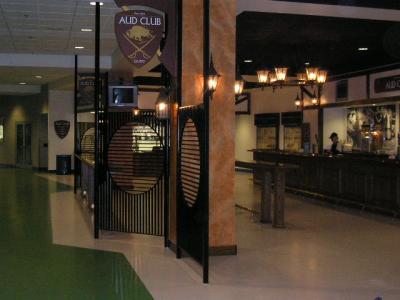
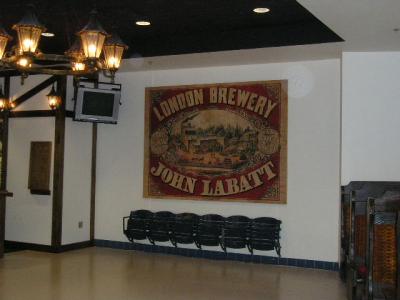
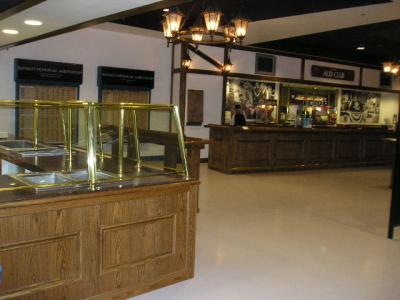
Permalink: China_interesting.html
Words: 166
Location: Buffalo, NY
Category: tv
10/13/05 10:04 - ID#28199
adds
Permalink: adds.html
Words: 163
Location: Buffalo, NY
Category: tv
10/12/05 07:23 - ID#28198
Tv Commerical article
I found this article in the USA Today. I think it is interesting it is about comericals during TV shows and how there are more or less of them and how it effects some of the shows. They are one reason why I like shows on cable better sometimes. I love 24 but wonder how much better it would be with out the breaks.
Ad glut turns off viewers
By Gary Levin, USA TODAY
Can't Bree grieve anymore without a MasterCard commercial loudly interfering?
Commercial gridlock: Shirley Knight plays Bree’s (Marcia Cross) mother-in-law on Desperate Housewives.
ABC
Lately, fans of Desperate Housewives, Lost and other top shows have been complaining about excessive commercials that seem more intrusive than ever and slow down the programs they surround.
"I have definitely noticed that the shows on ABC that I watch have significantly more commercials this season," complains Julie Raines, 33, of Denver. "It's so frustrating. Once you are really getting into a juicy story line, it stops, and you are bombarded with the same ads over and over."
Viewers have been griping about ads on TV since the days of black-and-white sets. Some have turned to digital video recorders such as TiVo to skip commercials altogether. Others sit and bear it.
We'll be back
The amount of “clutter,” including network and local commercials and plugs for other shows, steadily has increased on broadcast and cable, to the point where an “hour-long”
drama is about 40 minutes of original programming. Average non-program minutes in an hour of prime-time for each year:
Year Broadcast Cable
1996 9:53 12:46
1999 14:00 13:53
2001 14:39 14:30
2004 15:48 14:55
Note: Reflects prime-time hours on the six broadcast networks and all basic cable networks measured by Nielsen. Source: Nielsen Monitor-Plus
ABC ad-sales chief Mike Shaw says he's perplexed by increasing complaints.
"We've had the exact same commercial load for three years in a row," he says of the 9 p.m. ET/PT Sunday time slot, home to Housewives and before that, Alias. Viewers must "feel that way because they love the show so much, that they really notice it when the breaks are there."
But across prime-time TV, the number of ads and promos has increased sharply over the years. A typical "one-hour" prime-time series clocks in at less than 42 minutes, down from 44 minutes several years ago and nearly 48 minutes in the 1980s.
And shaving off the "previously on ..." recap, opening credits and a teaser for next week's episode, Sunday's Housewives ran 40 minutes and 30 seconds, meaning for every two minutes of programming, there's a minute of commercials or promos for other network shows. On cable, MTV has even more so-called clutter, with USA and Lifetime close behind.
But ABC, which studies show has slightly more commercials than other broadcast networks, has changed its drama format in a way that makes it seem even more loaded with ads.
Until recently, dramas unfolded in four segments, or "acts," often preceded by an introductory teaser that aired before the opening credits.
Starting this fall, ABC required all drama producers to carve up each episode into six portions. For some shows, including Housewives, the first segment runs for nine to 11 minutes before the first break. Once viewers are hooked, they're confronted with four more commercial breaks, each about 3½ minutes long, over the next 45 minutes.
To prevent channel surfing, networks increasingly avoid airing commercials between shows. Instead, they save several minutes of more substantial scenes for a show's ending and then move "seamlessly" into the next program. The upshot is that more ads and promos air within programs.
'Housewives' adds to clutter
Prime-time dramas are being broken up into smaller segments and interrupted more frequently by commercials and network promo spots.
Sunday’s Desperate Housewives, which carries 30 seconds more of ads than other ABC shows, featured six “acts,” up from four traditionally.
The shortest ran for 4 minutes 14 seconds, not much longer than the commercial breaks that surrounded it.
The total episode included 40:30 of programming, 13:49 of commercials and 5:45 of promos, credits and a recap. The breakdown in minutes and seconds:
9 p.m.: Recap, “Teaser”
(opening scene), Opening credits
Break 1: (9:09:45; 6 national
commercials, 3 promos)
Break 2: (9:22:25; 3 national
commercials, 2 promos,
3 local commercials)
Break 3: (9:30:22; 5 national
commercials, 3 promos)
Break 4: (9:40:43; 5 national commercials, 2 promos,
2 local commercials)
Break 5: (9:51:07; 6 national
commercials, 3 promos)
End credits/teaser for next
week’s episode/promo for
Housewives DVD
"The way the structure was before didn't make any sense," says ABC Entertainment chief Steve McPherson. "You'd have people sit through a commercial break to come back to 30 seconds of programming" at the end of an episode.
Lost and Housewives adopted the six-act structure early last season. ABC quickly expanded the practice to its entire lineup of hour-long series. Competitors followed suit: WB's dramas began adopting the same format last January and since last month has used it on every show. CBS and NBC employ it on newer shows including Criminal Minds, Las Vegas, Numb3rs and Surface, although producers of CSI, Law & Order and ER refused to go along. Fox uses it only on Bones.
McPherson says most producers "like it because you have real content in each of the acts."
But Boston Legal producer David E. Kelley isn't among them.
"There's no opportunity to develop any kind of storytelling momentum," Kelley says, fearing that quiet scenes of dialogue will never hold up to increasingly loud — and frequent — commercial breaks. "High-octane shows, or puzzle shows, will be immune to it.
"If a knife is plunged into someone's sternum, you pay attention," Kelley says. "But for shows that don't depend on violence or melodramatic scenes, it's tougher to compete in a six-act show than in four acts, or in 41 minutes instead of 45 minutes. You have to be a little more aggressive with them, musically or filmically, just to get people's attention back."
Everwood producer Greg Berlanti says carving up emotion-packed dramas into even smaller pieces can be "annoying," even if it's a necessary evil in a business that exists to sell advertising. "It makes you long for the day when everything comes out in boxed sets of DVDs so you can enjoy it."
And advertising researchers say the cluttered airwaves, which also include logos and promos during shows, risk turning off viewers even from must-see shows and worsening recall of their ads.
Yet Nielsen Media Research says TV viewership in U.S. homes hit record highs last season.
"There's been a lot of hand-wringing in the business about when viewers are going to say, 'Enough's enough,' but they haven't," says Tim Brooks, a TV historian and research chief at Lifetime. "It may never be that commercials drive people away from the set, but it makes them pay less attention to avoid the irrelevant interruptions."
No federal agency regulates the amount of commercial time on television. Until 1982, the major networks adhered to a voluntary code of the National Association of Broadcasters that limited commercials to 9.5 minutes per hour in prime time. But since the code was dropped, the number of commercials on prime-time TV has crept steadily higher.
Housewives sells 11 minutes, 15 seconds of national ad time and about 2½ minutes of local spots. On Sunday, it ran 4 minutes, 10 seconds of promos for 11 other series. Added up, they account for nearly 18 of the show's 61 minutes.
Housewives is among TV's most expensive shows. Thirty-second spots that sold for $450,000 in May, in advance of the season, now fetch $500,000 to $600,000, Shaw says, meaning the network rakes in at least $5 million an episode.
"If we had extra time to sell, I would tell everybody," he says.
Advertisers tolerate the excess bunching of commercials for the sake of reaching 25 million viewers in TV's biggest hits.
Housewives is among a handful of shows "where there's tremendous attention, passion and a halo effect where your commercial might actually resonate," says Initiative Media's top ad buyer Tim Spengler. "Up to a certain point, (they) look the other way."
Permalink: Tv_Commerical_article.html
Words: 1295
Location: Buffalo, NY
10/12/05 02:42 - ID#28197
town ballroom
I am going to try and explain what it looks like inside the best that I can for those who have never been there. As they check ID's and take tickets at the door there is a bar that runs down the middle of the room. Near the end of the bar there are ladies rooms to the left and a mens room to the right. The bar makes an oval shape and then you have two sets of doors and between those two doors is the merch area. Once those doors open you walk into the concert area. Try to imagine Studio Arena or some other theatre where there is a round stage with seats on the left and right of the stage then they go up an incline as they go away from the stage. That is how it is except there are no seats. You have the elevated stage and the floor area. Then there are steps that lead down to the floor and a medium level U shaped isle or standing area. Back to the doors for a minute as you walk through them you would be looking down on the stage and floor and the other standing area. There is a bar up there then last night they had soe seats up there. I belive that there is are seats abouve where you walk through the doors but I've never gone up there. I wish I had a picture of the place it would make more sense.

not sure if my crappy drawing made things better or worse. but the palce is till set up like the theatre it used to be but the cahirs are gone. On a side note on my way home I went down allen and it looked and sounded like a bunch of people where having fun at allen st. hardware I just jurried past to go home and I caught the end of the Steelsers game. They won it was a great ending.
Permalink: town_ballroom.html
Words: 448
Location: Buffalo, NY
10/11/05 10:12 - ID#28196
Couple events tonight
Permalink: Couple_events_tonight.html
Words: 98
Location: Buffalo, NY
Category: movies
10/09/05 10:13 - 46ºF - ID#28195
Warren Miller

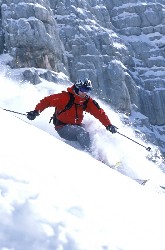
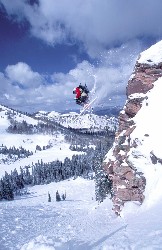
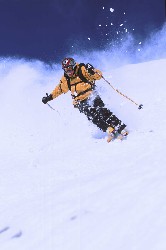
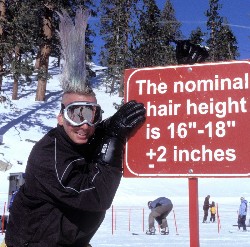

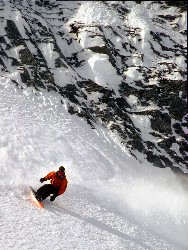

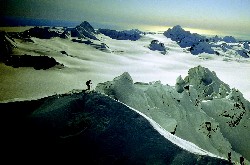

I found those pictures on line. They are a small refection of some of amazing stuff in the movie.
Permalink: Warren_Miller.html
Words: 181
Location: Buffalo, NY
Category: movies
10/08/05 06:36 - 47ºF - ID#28194
Waiting.... Violance
On my way out of the theatre I checked the movie times and A history of Violance was coming on soon so I saw that to. It was nice and violant but it also had a story to it. IF violance is your thing then I would recomend it.
Permalink: Waiting_Violance.html
Words: 194
Location: Buffalo, NY
Category: hockey
10/07/05 08:00 - 53ºF - ID#28193
CBC OLN schedulle
DATE VISITOR HOME TIME NAT'L TV
Oct 8, 2005 Canadiens 0 Maple Leafs 0 7:00 PM EDT CBC,RDS
Oct 8, 2005 Sabres 0 Senators 0 7:00 PM EDT CBC
Oct 8, 2005 Canucks 0 Oilers 0 10:00 PM EDT CBC
Oct 15, 2005 Maple Leafs 0 Canadiens 0 7:00 PM EDT CBC,RDS
Oct 15, 2005 Bruins 0 Senators 0 7:00 PM EDT CBC
Oct 15, 2005 Oilers 0 Flames 0 10:00 PM EDT CBC
Oct 22, 2005 Flyers 0 Maple Leafs 0 7:00 PM EDT CBC
Oct 22, 2005 Avalanche 0 Canucks 0 10:00 PM EDT CBC
Oct 29, 2005 Senators 0 Maple Leafs 0 7:00 PM EDT CBC
Oct 29, 2005 Canucks 0 Avalanche 0 10:00 PM EDT CBC
Nov 5, 2005 Lightning 0 Maple Leafs 0 7:00 PM EST CBC
Nov 5, 2005 Canucks 0 Flames 0 10:00 PM EST CBC
Nov 12, 2005 Maple Leafs 0 Canadiens 0 7:00 PM EST CBC,RDS
Nov 12, 2005 Avalanche 0 Flames 0 10:00 PM EST CBC
Nov 19, 2005 Thrashers 0 Maple Leafs 0 7:00 PM EST CBC
Nov 19, 2005 Devils 0 Senators 0 7:00 PM EST CBC
Nov 19, 2005 Blackhawks 0 Oilers 0 10:00 PM EST CBC
Nov 26, 2005 Canadiens 0 Maple Leafs 0 7:00 PM EST CBC,RDS
Nov 26, 2005 Bruins 0 Senators 0 7:00 PM EST CBC
Nov 26, 2005 Canucks 0 Coyotes 0 10:00 PM EST CBC,HDNet
Dec 3, 2005 Sharks 0 Maple Leafs 0 7:00 PM EST CBC
Dec 3, 2005 Flames 0 Penguins 0 7:00 PM EST CBC
Dec 3, 2005 Bruins 0 Oilers 0 10:00 PM EST CBC
Dec 10, 2005 Stars 0 Maple Leafs 0 7:00 PM EST CBC
Dec 10, 2005 Senators 0 Flames 0 10:00 PM EST CBC
Dec 17, 2005 Maple Leafs 0 Senators 0 7:00 PM EST CBC
Dec 17, 2005 Oilers 0 Canucks 0 10:00 PM EST CBC
Dec 23, 2005 Bruins 0 Maple Leafs 0 7:00 PM EST CBC
Dec 23, 2005 Flames 0 Canucks 0 10:00 PM EST CBC
Dec 27, 2005 Maple Leafs 0 Penguins 0 7:30 PM EST CBC
Dec 31, 2005 Maple Leafs 0 Devils 0 7:00 PM EST CBC
Dec 31, 2005 Oilers 0 Flames 0 10:00 PM EST CBC
Jan 7, 2006 Senators 0 Canadiens 0 2:00 PM EST CBC,RDS
Jan 7, 2006 Maple Leafs 0 Oilers 0 7:00 PM EST CBC
Jan 7, 2006 Flames 0 Canucks 0 10:00 PM EST CBC
Jan 14, 2006 Coyotes 0 Maple Leafs 0 7:00 PM EST CBC
Jan 14, 2006 Senators 0 Oilers 0 10:00 PM EST CBC
Jan 21, 2006 Maple Leafs 0 Senators 0 7:00 PM EST CBC
Jan 21, 2006 Canadiens 0 Canucks 0 10:00 PM EST CBC,RDS
Jan 26, 2006 Sabres 0 Maple Leafs 0 7:30 PM EST CBC
Jan 26, 2006 Stars 0 Avalanche 0 9:00 PM EST CBC
Feb 4, 2006 Devils 0 Maple Leafs 0 7:00 PM EST CBC
Feb 4, 2006 Canucks 0 Oilers 0 10:00 PM EST CBC
Feb 11, 2006 Rangers 0 Maple Leafs 0 6:00 PM EST CBC
Mar 4, 2006 Senators 0 Maple Leafs 0 7:00 PM EST CBC
Mar 4, 2006 Sharks 0 Flames 0 10:00 PM EST CBC
Mar 11, 2006 Lightning 0 Maple Leafs 0 7:00 PM EST CBC
Mar 11, 2006 Stars 0 Canucks 0 10:00 PM EST CBC
Mar 18, 2006 Penguins 0 Canadiens 0 7:00 PM EST CBC,RDS
Mar 18, 2006 Maple Leafs 0 Rangers 0 7:00 PM EST CBC
Mar 18, 2006 Red Wings 0 Oilers 0 10:00 PM EST CBC
Mar 25, 2006 Maple Leafs 0 Canadiens 0 7:00 PM EST CBC,RDS
Mar 25, 2006 Senators 0 Flyers 0 7:00 PM EST CBC
Mar 25, 2006 Oilers 0 Canucks 0 10:00 PM EST CBC
Apr 1, 2006 Sabres 0 Maple Leafs 0 7:00 PM EST CBC
Apr 1, 2006 Flames 0 Oilers 0 10:00 PM EST CBC
Apr 8, 2006 Maple Leafs 0 Flyers 0 7:00 PM EDT CBC
Apr 8, 2006 Flames 0 Canucks 0 10:00 PM EDT CBC
Apr 15, 2006 Senators 0 Maple Leafs 0 7:00 PM EDT CBC
Apr 15, 2006 Avalanche 0 Canucks 0 10:00 PM EDT CBC
DATE VISITOR HOME TIME NAT'L TV
Oct 5, 2005 Rangers 5 Flyers 3 7:00 PM EDT OLN RECAP
Oct 10, 2005 Penguins 0 Sabres 0 7:00 PM EDT OLN
Oct 11, 2005 Coyotes 0 Stars 0 8:30 PM EDT OLN,TSN
Oct 17, 2005 Panthers 0 Rangers 0 7:00 PM EDT OLN
Oct 18, 2005 Bruins 0 Canadiens 0 7:30 PM EDT OLN,TSN,RDS
Oct 24, 2005 Red Wings 0 Blue Jackets 0 7:00 PM EDT OLN
Oct 25, 2005 Panthers 0 Penguins 0 7:30 PM EDT OLN
Oct 31, 2005 Canadiens 0 Rangers 0 7:00 PM EST OLN,RDS
Nov 1, 2005 Blackhawks 0 Red Wings 0 7:00 PM EST OLN,TSN
Nov 7, 2005 Penguins 0 Rangers 0 7:00 PM EST OLN
Nov 8, 2005 Bruins 0 Flyers 0 7:00 PM EST OLN,TSN
Nov 15, 2005 Lightning 0 Capitals 0 7:00 PM EST OLN
Nov 16, 2005 Penguins 0 Flyers 0 7:00 PM EST OLN
Nov 22, 2005 Lightning 0 Flyers 0 7:00 PM EST OLN
Nov 29, 2005 Bruins 0 Devils 0 7:30 PM EST OLN,TSN
Dec 5, 2005 Wild 0 Rangers 0 7:00 PM EST OLN
Dec 6, 2005 Islanders 0 Blues 0 8:00 PM EST OLN
Dec 6, 2005 Thrashers 0 Sharks 0 10:30 PM EST OLN,TSN
Dec 12, 2005 Penguins 0 Red Wings 0 7:00 PM EST OLN
Dec 13, 2005 Penguins 0 Blues 0 8:00 PM EST OLN
Dec 19, 2005 Stars 0 Wild 0 8:00 PM EST OLN
Dec 20, 2005 Avalanche 0 Predators 0 8:00 PM EST OLN,TSN
Dec 26, 2005 Stars 0 Blues 0 8:00 PM EST OLN
Dec 27, 2005 Bruins 0 Capitals 0 7:00 PM EST OLN
Jan 2, 2006 Lightning 0 Islanders 0 7:00 PM EST OLN
Jan 2, 2006 Stars 0 Kings 0 10:30 PM EST OLN
Jan 3, 2006 Wild 0 Red Wings 0 7:00 PM EST OLN
Jan 9, 2006 Blues 0 Avalanche 0 9:00 PM EST OLN
Jan 10, 2006 Red Wings 0 Hurricanes 0 7:00 PM EST OLN,TSN
Jan 16, 2006 Lightning 0 Sharks 0 8:00 PM EST OLN
Jan 17, 2006 Devils 0 Blues 0 8:00 PM EST OLN,TSN
Jan 23, 2006 Bruins 0 Capitals 0 7:00 PM EST OLN
Jan 23, 2006 Mighty Ducks 0 Kings 0 10:30 PM EST OLN
Jan 24, 2006 Coyotes 0 Wild 0 8:00 PM EST OLN,TSN
Jan 30, 2006 Flyers 0 Rangers 0 7:00 PM EST OLN
Jan 31, 2006 Wild 0 Avalanche 0 9:00 PM EST OLN
Feb 6, 2006 Lightning 0 Islanders 0 7:00 PM EST OLN
Feb 6, 2006 Flames 0 Sharks 0 10:30 PM EST OLN
Feb 7, 2006 Blackhawks 0 Coyotes 0 9:00 PM EST OLN
Feb 12, 2006 Avalanche 0 Red Wings 0 5:00 PM EST OLN
Feb 28, 2006 Wild 0 Avalanche 0 9:00 PM EST OLN
Mar 5, 2006 Stars 0 Blackhawks 0 7:00 PM EST OLN,TSN
Mar 6, 2006 Islanders 0 Capitals 0 7:00 PM EST OLN
Mar 7, 2006 Avalanche 0 Blues 0 8:00 PM EST OLN
Mar 13, 2006 Canucks 0 Stars 0 8:30 PM EST OLN
Mar 14, 2006 Sabres 0 Capitals 0 7:00 PM EST OLN
Mar 14, 2006 Coyotes 0 Kings 0 10:30 PM EST OLN
Mar 20, 2006 Bruins 0 Rangers 0 7:00 PM EST OLN
Mar 21, 2006 Thrashers 0 Bruins 0 7:00 PM EST OLN
Mar 27, 2006 Red Wings 0 Blues 0 8:00 PM EST OLN
Mar 28, 2006 Mighty Ducks 0 Avalanche 0 9:00 PM EST OLN,TSN
Apr 3, 2006 Blackhawks 0 Avalanche 0 9:00 PM EDT OLN
Apr 4, 2006 Flyers 0 Rangers 0 7:00 PM EDT OLN
Apr 10, 2006 Capitals 0 Bruins 0 7:00 PM EDT OLN
Apr 11, 2006 Penguins 0 Flyers 0 7:00 PM EDT OLN
Apr 17, 2006 Stars 0 Red Wings 0 7:00 PM EDT OLN
Apr 17, 2006 Kings 0 Sharks 0 10:30 PM EDT OLN
Apr 18, 2006 Blues 0 Blackhawks 0 8:30 PM EDT OLN,TSN
I know that won't cover all the the games that will be on TV but it is at least a verry good starting point. On adelphia I get OLN on Chanel #140.
Permalink: CBC_OLN_schedulle.html
Words: 833
Location: Buffalo, NY
Author Info
Date Cloud
- 06/16
- 12/15
- 11/15
- 07/15
- 06/15
- 05/15
- 03/15
- 02/15
- 01/15
- 12/14
- 11/14
- 08/14
- 07/14
- 06/14
- 05/14
- 04/14
- 03/14
- 02/14
- 12/13
- 11/13
- 10/13
- 09/13
- 08/13
- 07/13
- 06/13
- 05/13
- 04/13
- 03/13
- 02/13
- 01/13
- 12/12
- 11/12
- 10/12
- 09/12
- 08/12
- 07/12
- 06/12
- 05/12
- 04/12
- 03/12
- 02/12
- 01/12
- 12/11
- 11/11
- 10/11
- 09/11
- 08/11
- 07/11
- 06/11
- 05/11
- 04/11
- 03/11
- 02/11
- 01/11
- 12/10
- 11/10
- 10/10
- 09/10
- 08/10
- 07/10
- 06/10
- 05/10
- 04/10
- 03/10
- 02/10
- 01/10
- 12/09
- 11/09
- 10/09
- 09/09
- 08/09
- 07/09
- 06/09
- 05/09
- 04/09
- 03/09
- 02/09
- 01/09
- 12/08
- 11/08
- 10/08
- 09/08
- 08/08
- 07/08
- 06/08
- 05/08
- 04/08
- 03/08
- 02/08
- 01/08
- 12/07
- 11/07
- 10/07
- 09/07
- 08/07
- 07/07
- 06/07
- 05/07
- 04/07
- 03/07
- 02/07
- 01/07
- 12/06
- 11/06
- 10/06
- 09/06
- 08/06
- 07/06
- 06/06
- 05/06
- 04/06
- 03/06
- 02/06
- 01/06
- 12/05
- 11/05
- 10/05
- 09/05
- 08/05
- 07/05
- 06/05
- 05/05
- 04/05
- 03/05
- 02/05
- 01/05
- 12/04
- 11/04
- 10/04
- 09/04
- 08/04
- 07/04
- 06/04
Category Cloud
- advertising
- art
- body art
- buffalo
- comedy
- concerts
- drugs
- elmwood
- entertainment
- estrip
- event
- events
- food
- freedom
- hockey
- holiday
- holidays
- internet
- issues
- lax
- life
- movies
- music
- news
- nfl
- nhl
- olympics
- party
- peterazzi
- philosophy
- photos
- politics
- poll
- potpourri
- sex
- slideshow
- sports
- summer
- travel
- tv
- wedding
- wishes
- work
More Entries
My Fav Posts
- This user has zero favorite blogs selected ;(

 mobile
mobile
